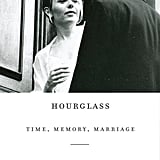Hourglass Dani Shapiro
Hourglass is a stalwart witness to the erosions of time’s tides that, in being stalwart, it also wishes to stand against.’’ —The Boston Globe 'A meditation that’s intimate, wide-ranging, funny and smart.' —Portland Press Herald 'Dani Shapiro presents a sharp look at the realities of marriage. “Though Hourglass takes an emotional toll on its reader—in particular, because of Shapiro’s searing, pared-down narrative—it is a love story through and through, as she probes the underbelly of romantic relationships, revealing what we often feel so potently, but don’t put words to.In a candid conversation with Vogueabout her marriage and how she realized its written depiction. Dani Shapiro Dani Shapiro is the author of the instant New York Times best selling memoir, Inheritance, which was published in January 2019 by Knopf. Her other books include the memoirs Hourglass, Still Writing, Devotion, and Slow Motion, and five novels including Black & White and Family History. Dani Shapiro is the bestselling author of the memoirs Hourglass, Still Writing, Devotion, and Slow Motion, and five novels including Black & White and Family History. She lives with her family in LItchfield County, Connecticut. Her latest memoir, Inheritance, will be published by Knopf in January, 2019.
1. Shapiro describes the process of decluttering her life and house at the outset of the memoir. How does this listing and parsing of ordinary household objects allow readers to enter her world and relate it to their own?
2. When reading her old journals from her honeymoon, Shapiro acknowledges the oddness of her writing about herself in the third person. What does this suggest about how she thought of herself as a young woman, and how she thinks of herself now, in midlife?

Dani Shapiro Author
3. What does the memoir suggest about the nature of hindsight? Does Shapiro speculate about how she’d make different choices if she already knew the outcomes, and how did reading about this make you think about your own choices?
4. Although Shapiro takes comfort in her older (and mostly analog) ways of recording experience and communication, she is a creature of modern technology as well, and brings it into her narrative. What does the juxtaposition of older and newer ways of making memories say about our human impulse to connect? What are we gaining or losing in the shift from privately writing in journals to posting on social media?
5. What’s particularly shocking for the family about the incorrect online “fact” that she and M. are divorced? Do public “truths” like this have a way of tend to have an impact on reality?
6. The woodpecker and coy-wolves pose literal conflicts—fear and disturbances to the couple’s daily lives—but more figurative ones as well. What does Shapiro internalize about these animals, and how do her observations of them help her glean more in the process of reviewing her past?
7. What are some of the more haunting memories of the couple’s life together? How do the gradually revealed details about her son reflect the pain of those particular times? And how do those painful times serve to strengthen the couple’s bond?
8. Does M. appear in the memoir as an individual, separate from Shapiro’s interactions and past with him? How does his character in the book reflect the ultimate subjectivity of any narrative, and the dependence on a person’s point of view? Discuss the parts of his life and job that stood out to you as most formative in Shapiro’s understanding of her husband.
9. The couple are both writers. What do you think Shapiro is conveying about two artists who make a life together? What are the benefits and the challenges? Each of them has multiple projects and assignments in drama/TV that require them at times to adopt personas. Does that performative aspect of art seep into their lives and into these pages?
10. Discuss Shapiro’s tonal equanimity in describing major life events. What about her profession as a writer allows her to arrive at a voice that is more densely poetic than confessional?
11. How did Shapiro’s pr
11. How did Shapiro’s process influence your own understanding of your past? Have you ever undergone an exercise like the one in this book—of cleaning house in an attempt to clear your mind? Are there things in your past that you’ve consciously or unconsciously hidden away in “closets,” and how do you go about unearthing them?
Book Summary
Dani Shapiro Podcast
The best-selling novelist and memoirist delivers her most intimate and powerful work: a piercing, life-affirming memoir about marriage and memory, about the frailty and elasticity of our most essential bonds, and about the accretion, over time, of both sorrow and love.
Dani Shapiro Instagram
Hourglass is an inquiry into how marriage is transformed by time - abraded, strengthened, shaped in miraculous and sometimes terrifying ways by accident and experience. With courage and relentless honesty, Dani Shapiro opens the door to her house, her marriage, and her heart, and invites us to witness her own marital reckoning - a reckoning in which she confronts both the life she dreamed of and the life she made, and struggles to reconcile the girl she was with the woman she has become.
What are the forces that shape our most elemental bonds? How do we make lifelong commitments in the face of identities that are continuously shifting, and commit ourselves for all time when the self is so often in flux? What happens to love in the face of the unexpected, in the face of disappointment and compromise - how do we wrest beauty from imperfection, find grace in the ordinary, desire what we have rather than what we lack? Drawing on literature, poetry, philosophy, and theology, Shapiro writes gloriously of the joys and challenges of matrimonial life, in a luminous narrative that unfurls with urgent immediacy and sharp intelligence. Artful, intensely emotional work from one of our finest writers.
